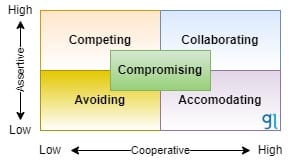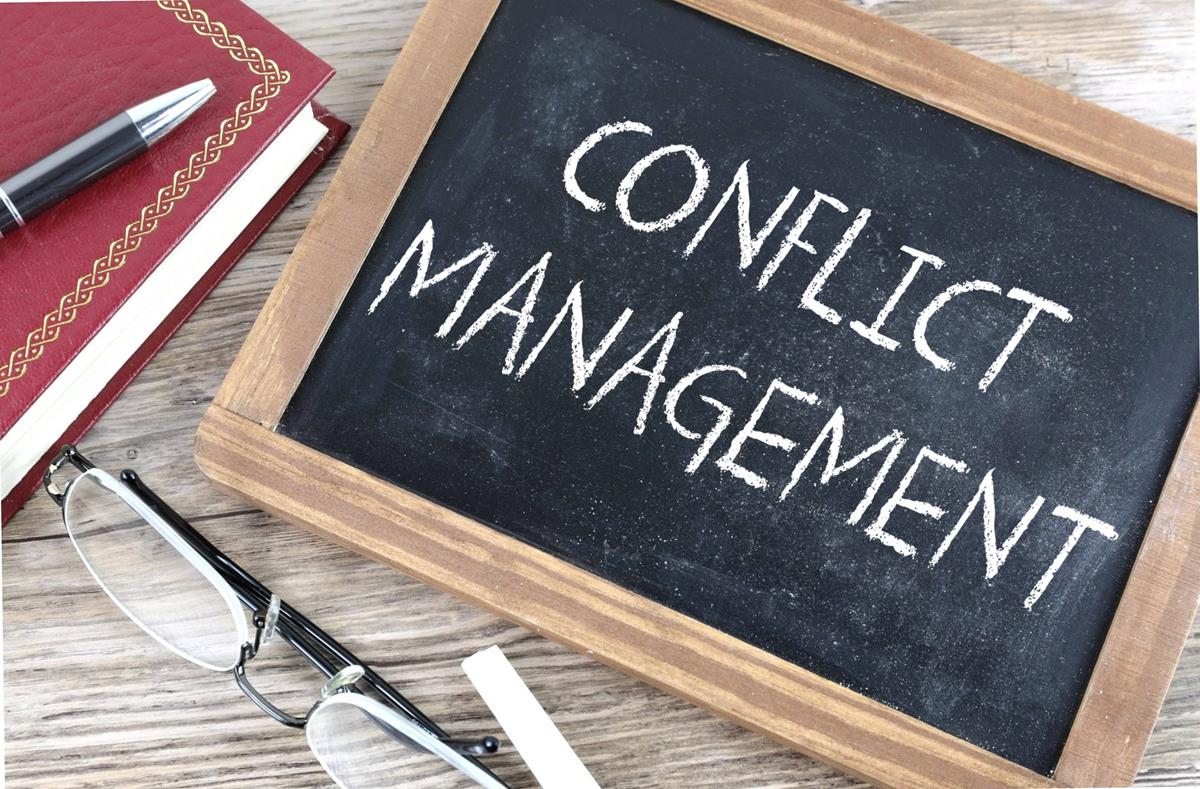What are conflict management techniques, and how can you use them at work? Since it is almost tough to prevent conflict, having strong conflict management skills is advantageous in the majority of jobs. It is in our nature to disagree, and when handled properly, conflicts may be constructive. But what is conflict management and how can you incorporate it into your work environment? Let us find out in this blog.
Table of Contents
- What is Conflict Management?
- Popular Conflict Management Styles
- Effective Conflict Management Practices
- Conclusion
What is Conflict Management?
The art of recognizing and resolving problems in a rational, equitable, and effective manner is known as conflict management. Considering that disputes arise frequently in the workplace, it’s essential that there be individuals on hand who are knowledgeable about common challenges that occur and how one can address them. In today’s marketplace, this is much more crucial than ever where an occurrence of a dispute is considered natural.
Conflict is not uncommon in people’s lives. People encounter it every day in their relationships with friends, family, and especially at work. Workplace conflict leads to a great deal of annoyance, suffering, discomfort, despair, and fury. In the modern world, employers choose to work with people from different intellectual and cultural roots as well as with different perspectives. Disagreements are inevitable in a workplace where individuals approach the same issues from different perspectives.
So, when such conflict arises, it is prudent for every organization to have effective conflict management techniques in place. Let us discuss the many conflict management styles present that one can choose from.
Popular Conflict Management Styles
Conflict management styles are divided into 5 ways- compromising, accommodating, avoiding, compromising, and collaborating. Let us understand each one of them one by one.

Competing
A competing style adopts a rigid stance and declines to consider the viewpoints of the other parties. You will keep imposing your opinion on others or dismissing their suggestions until you get things done your way.
This approach is effective when you need to protect your rights or values, make a snap decision and persuade others to agree, put an end to a protracted argument, or stop a dreadful, contradictory decision from being implemented.
Accommodating
One who is accommodating puts others’ wants and needs ahead of their own. You will be placing other people’s problems ahead of your own. This kind of behavior typically occurs when you start giving in or are convinced to do so.
This approach may be useful if you have a lower level of concern for the subject than other people, desire to maintain the status quo, believe you are in the wrong or are made to accept the opposing viewpoint.
Avoiding
As the name suggests, this style entirely avoids confrontation. You wouldn’t pursue your own convictions or the ideas of all the other participants. Simply put, anytime a problem arose, you would continually put it off or avoid it altogether.
This approach may be useful if the disagreement seems unimportant, you need some more time to ponder or are busy, you believe you have no shot at victory, or you are concerned about receiving animosity.
Compromising
A compromising style looks for a resolution that, at the very least, somewhat satisfies all parties. Finding a medium ground between all the wants would require effort, and the results would often leave individuals feeling either somewhat or not at all pleased.
This strategy might be suitable when it becomes more crucial to find a solution than it is for it to be a superb one, a deadline is drawing near, you’ve reached a deadlock, or you only need a short-term fix at the time.
Collaborating
Finding a solution that will satisfy the demands of all parties is the goal of this style. You will continuously strive for a solution that actually satisfies everybody and results in a win-win scenario instead of attempting to find a compromise.
This approach is effective when it’s necessary to consider multiple viewpoints, whenever there is a significant agreement between the parties, when the outcome is too significant for anybody to be dissatisfied, or when the opinions of several parties need to be addressed.
Effective Conflict Management Practices
So, how can you finally resolve the conflict? Wishing there was a magical wand and you would wave it and the conflict would disappear. Only if that were the case but it isn’t. However, you can take certain measures to resolve it step by step and may even prevent it. Let us look at what those practices are.
Watch out for conflict
Keep a watch for any shifts in the environment at work as well as any potential conflicts. Don’t ignore the signs of an unspoken dispute. Conflicts that are brief and improbable to worsen can only be safely disregarded. Although initially, it may seem simple to ignore a disagreement, doing so usually backfires and makes things harder to resolve in the long run.
Approach conflict with consideration and reason
Remain composed and make sure you can tackle the problem with thought, reason, and objectivity. If you directly have a stake in the matter, you might need to ask somebody else to take care of it. Resist the urge to use the “fight or flight” response.
Avoid being passive; do not adopt an attitude of pity; and embrace all viewpoints, whether they are correct or incorrect. Similarly, refrain from being violent; do not adopt an authoritative stance, and pay no attention to rational argument. Rather, strive to adopt an assertive posture while being respectful to all parties and considering all viewpoints.
Do your research
Spend some time learning about what occurred, who was involved, how individuals are feeling, and the underlying issues. Avoid making assumptions or jumping to conclusions. Speak with each person separately and in confidence, and pay close attention to what they say so you can grasp it.
Look for any deeper factors contributing to the disagreement that might not be visible at first. For instance, an employee may appear to be at odds with their coworkers, but the real issue is that they believe their boss is dealing with them unjustly. Be mindful that the parties involved might view the same issue differently.
Decide how to tackle the conflict
Once you have understood where the conflict is arising from and the viewpoints of everyone involved, it’s time to decide how you can tackle it. Can the issue be resolved internally or should the legal parties be involved? Is it something that you can let go of with a warning or can you talk it out with an informal gathering?
You can choose what course of action to take once you ask yourself these questions. You can also consult your HR department if you are confused about how to proceed. There may be circumstances when official processes, including legal proceedings, may need to be triggered. Many problems, meanwhile, can be handled without the need for expensive court fights. An imposed settlement, which can leave all parties unhappy, would typically be less effective than a solution that both parties agree on during mediation.
Let everyone express themselves
You might be able to find a workable solution if you can bring the parties together. Establish rules and boundaries for the discussion and tackle it with a cheerful, cordial, and proactive attitude. The parties will be more likely to voice their opinions truthfully and freely, comprehend the root of the issue, and come up with solutions if they act assertively.
Ensure that everybody gets the opportunity to voice their opinions and concerns. If people believe their issues have been heard and their perspective has been appreciated, they will be more prepared to give up rigid beliefs and contemplate a compromise.
Implement the decisions made
It is crucial to make sure that everybody understands the decisions made and accepts individual accountability for any agreed-upon actions. A written agreement might be necessary for some circumstances.
Analyze how things progress
Don’t think that the problem has been solved for good once you have attempted to resolve it. Watch the situation closely going forward and assess how effectively the solution is performing. If the issue recurs, additional action might be required.
Implement prevention measures for the future
Consider the insights that can be drawn from the conflict that arose and how you handled it. What can be improved for the future? How could you improve your conflict resolution skills? You can also get professional training for the future if need be.
Conflict is unavoidable, but it need not be negative
In conclusion, conflict occurs frequently in our daily lives. You may have multiple disagreements with your friends, family, or coworkers. However, there are a number of dispute resolution techniques you can use to make sure this problem is insurmountable. The achievement of the company’s objectives depends on successfully resolving conflict at work. Therefore, if there are any issues or conflicts between your employers, search for the best approaches to handle the matter. The conflict management styles and techniques listed above can help you learn how to handle disagreements at work. Now you can learn more about conflict management and its various approaches in this Conflict Management course.









